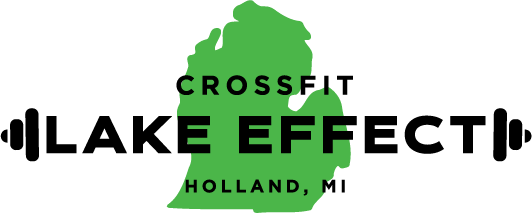A NEW LOOK AT “CORE STRENGTH” & HOW TO EFFECTIVELEY TRAIN IT, PART 1
Training an athlete for the purpose of improving their “core strength” is a very touchy subject in Strength & Conditioning. On one end of the spectrum, coaches believe all you need to do is perform your major multifunctional movements correctly (squat & deadlift) to develop sufficient “core strength”. On the other end, coaches believe exercises used specifically to develop “core strength” are the foundation of their entire program. I find myself somewhere in the middle of this spectrum, taking from both sides because both have valid reasoning. My idea of developing “core strength” is by both locally and globally training all the musculature that is attached to the hips. The movements this musculature performs includes hip extension/flexion, hip abduction/adduction, lateral flexion, and anti-rotation.
In addition to the abdominals and hips, another muscle I find to be an integral part of well rounded “core strength” is the Latissimus Dorsi, or the “lats”. First off, one of the origin points of the lats is the iliac crest & sacrum (hips), so when your lats are tight it can easily pull you into extension and cause an anterior pelvic tilt. This will lead to poor transfer of energy throughout the body’s kinetic chain and cause potential compensation patterns. Secondly, the lats provide stabilization for all movements that are performed with the upper extremities; they are the glutes of the upper body. Lastly, the lats are tied to the musculature of the hip through a myofascial sling known as the Posterior Oblique Sling. Think about when you are running - when your right arm swings back, so does your left leg.
MYOFASCIAL SLINGS
In order for our body to perform dynamic movements, it is essential that our myofascial slings are working efficiently. There are four major myofascial slings in our body. They are the Anterior Oblique Sling, Posterior Oblique Sling, Deep Longitudinal Sling, and Lateral Sling. Each myofascial sling is responsible for certain movements patterns in each plane of motion (POM). That is why developing your athletes’ myofascial slings is so important; to be prepared for the unpredictable nature of sport, the ability to stabilize and transfer energy in all planes of motion is essential (1)!
Posterior Oblique Sling
-POM: sagittal, transverse
-Upper Origin: Latissimus Dorsi
-Lower Origin: Contralateral Gluteus Maximus
-Function: producing force during walking, running, and sprinting & transfer of force between upper and lower extremities during rotational movements
Anterior Oblique Sling
-POM: Transverse (primary), Frontal (secondary)
-Upper Origin: External and internal oblique
-Lower Origin: Contralateral Adductor
-Function: transfer of force between upper and lower extremities during rotational movements & hip stability
Deep Longitudinal Sling
-POM: Sagittal
-Upper Origin: erector spinae, multifidus
-Lower Origin: sacrotuberous ligament, biceps femoris, peroneus longus, and anterior tibilais
-Function: horizontal force production & controls ground reaction forces during gait
Lateral Sling
-POM: Frontal
-Upper Origin: Quadratus lumborum
-Lower Origin: Gluteus Medius, TFL, adductors
-Function: provides hip stability during frontal plane movement
When there is a weak link in a sling this leads to either an energy leakage within the kinetic chain or a possible compensation pattern that could lead to injury down the road. This is why when we are training our athletes to improve their core strength we shouldn’t only look at muscle individually, but at each sling as a whole. (2)
ADRESSING “CORE STRENGTH”
The most common prescription to address a lack of “core strength” from Strength and Conditioning Coaches is to have the athletes perform plank variations. This is a very effective option only for athletes with a low training age (middle school, high school, and unfortunately some college athletes). It teaches them how to fire the musculature of their abdominals and hips, so they can properly brace and maintain an isometric position.
Initially when planks are programmed the athletes can only maintain proper position and stabilize their trunk for minimal amounts of time. Once the athlete can hold proper position for short durations (10-20 seconds), progressive overload must take place for further adaptation to occur. Typically to provide an overloading stimulus for the plank, coaches either increase the duration of the movement or by adding load to the movement (by placing a plate on the back of the athlete).
Although both of these are logical options when progressively overloading the plank, there comes a point in when the musculature of the abdominals and hips are no longer the limiting factor. Something I often hear in the weight room from my athletes is, “this burns my shoulders more than anything else, and I don’t even feel it in my core.” At this point in our plank progression, if their ability to hold themselves in a proper position is limited by their shoulder girdle endurance, are we even achieving our goal of stressing the athletes “core strength”?
If this is an issue for athletes, you’ve got two possible solutions for progressively overloading the plank - use feet elevated variations or add manual resistance. Elevating your feet increases the intensity of the plank because it changes your body’s center of mass from being centered in your lower body to being centered in your upper body. It may sound like this variation will be more taxing for your upper body because that’s where your center of mass is now located. However, this change will cause your body to engage and increase motor unit recruitment from the musculature of the abdominals and hips to create balance within your body. This is due to the attempt to shift your center of mass towards your lower body and hips.
Intensity can also be increased by having a training partner apply manual resistance to provide progressive overload. Manual resistance is effective for all levels of athletes because the amount of force applied is dependent upon each individual athlete’s strength level. It also allows for strength to be trained both eccentrically and isometrically (both in advantageous and disadvantageous positions). Gaining strength in these portions of the movements will allow the athlete to take advantage of the stretch shortening cycle, making force absorption and production more efficient. The biggest benefit, however, is that it allows the core to actually be trained for strength rather than just endurance like most other plank variations. Due to the high levels of loading that can be applied (high intensity), minimal volume is needed for adequate stress to be applied. This allows for our “core strength” training to be focused more on “quality” rather than “quantity”, which is a rarity.
In
my next blog post I will go over all the possible variations of the feet
elevated planks. Also, I will explain
the five possible progressions for each one as well, so there is an option to
challenge any level of athlete.





